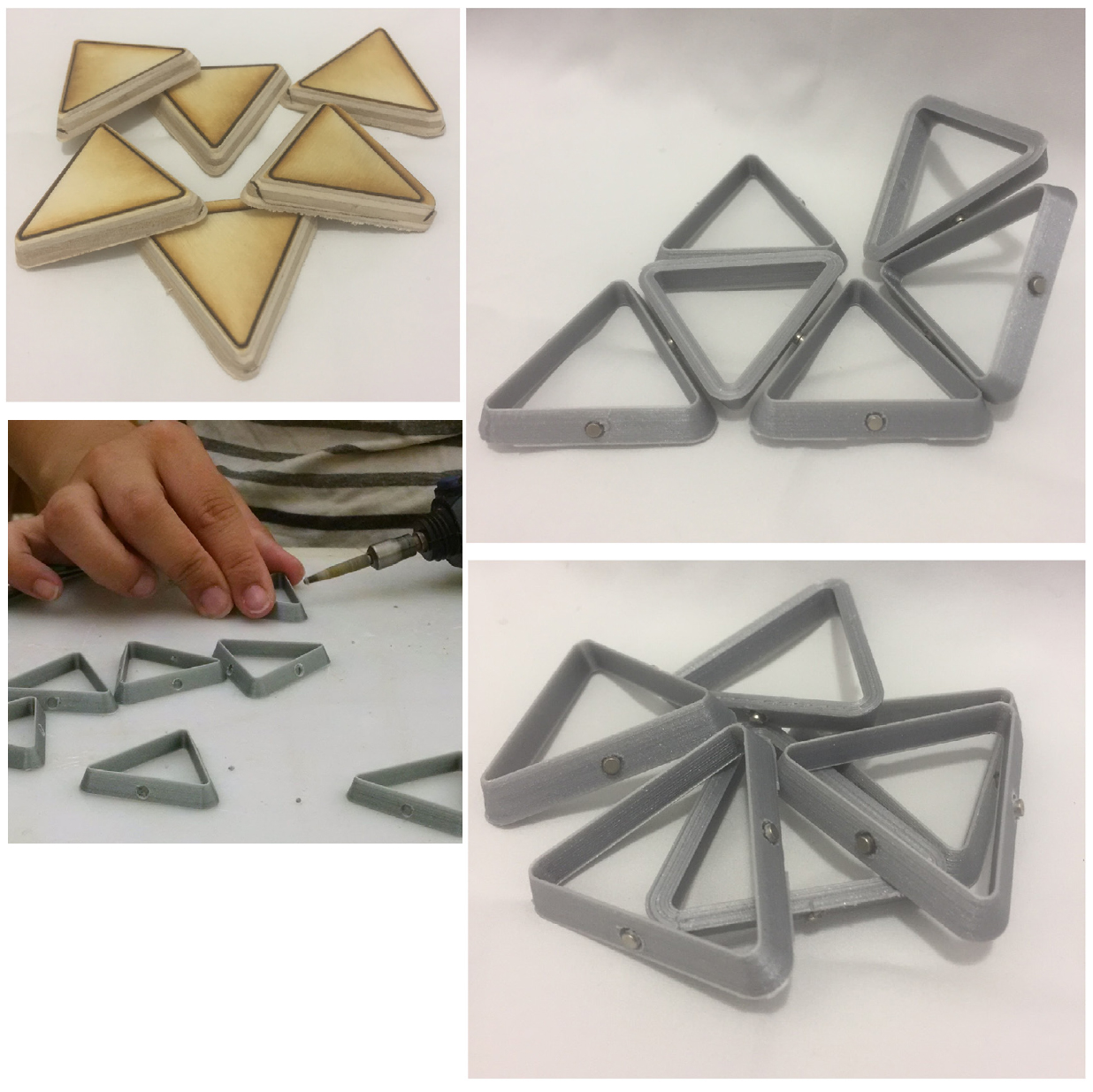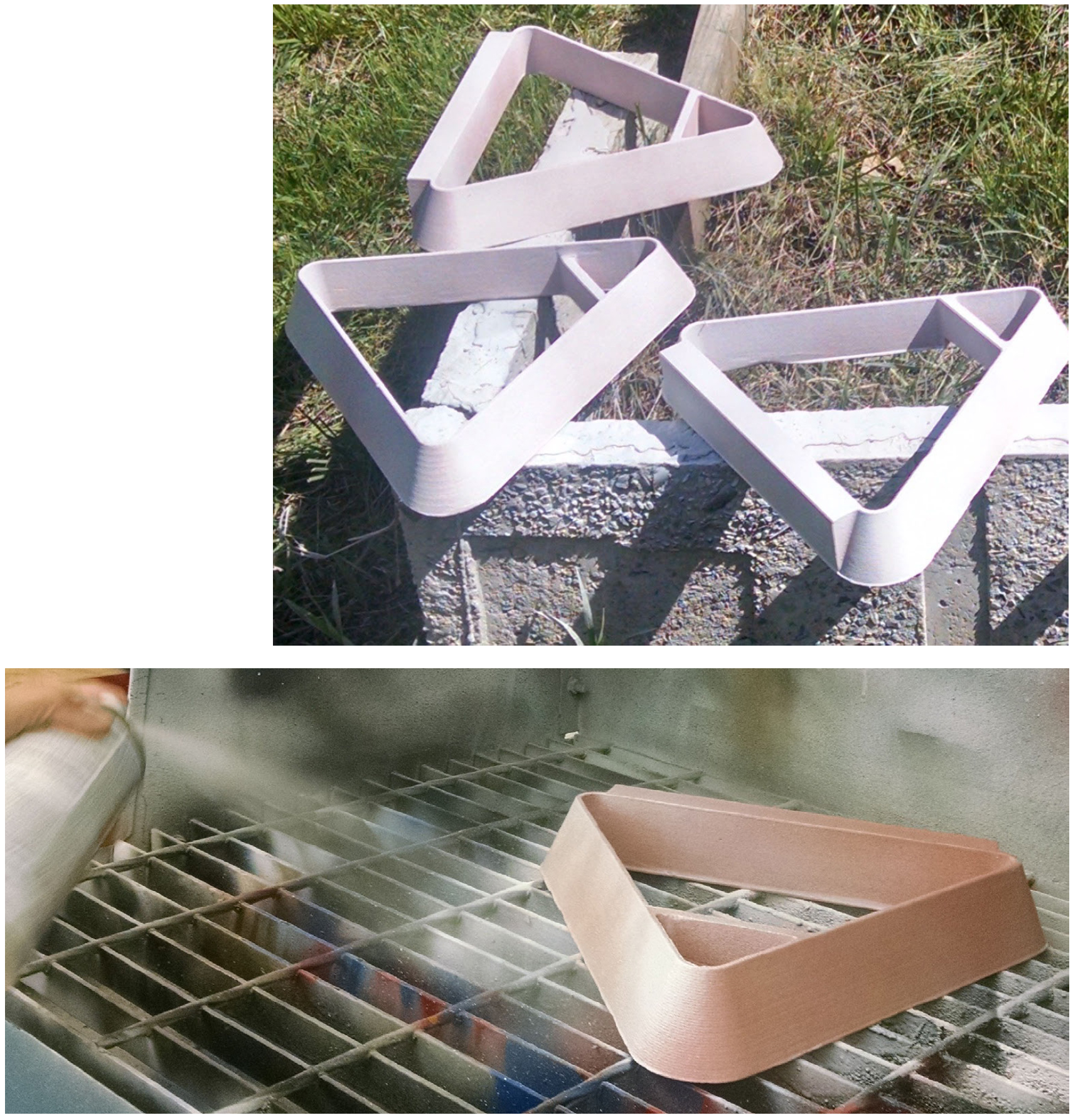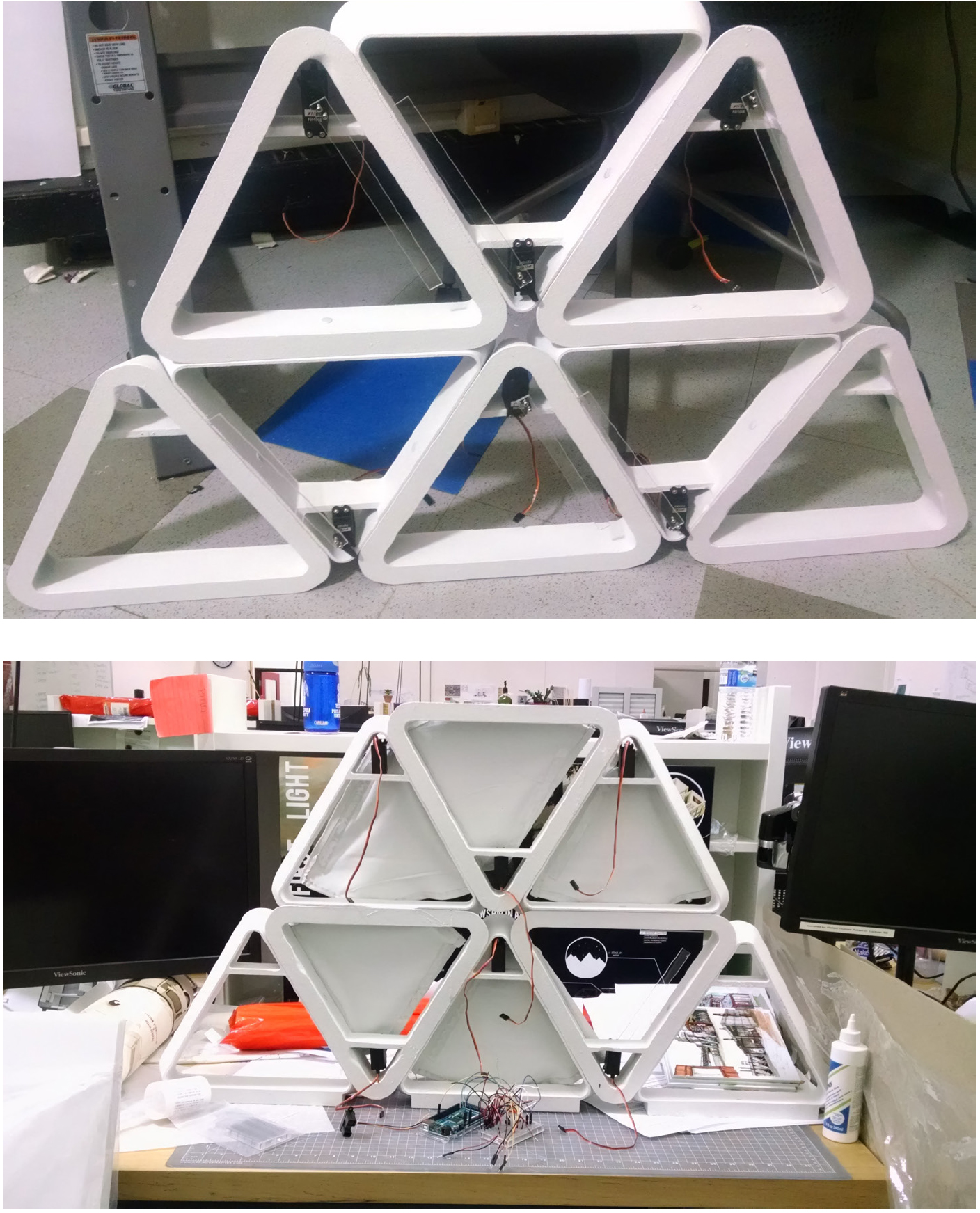Rethinking the Infusion Bay
Mina Bellare, Abbie Gall
Our project focuses on innovating health treatment by rethinking the infusion bay experience for cancer patients in hospitals and cancer facilities. About 50% of patients diagnosed with cancer receive chemotherapy. There are many unknowns in fighting this disease and many patients experience a loss of control. Doctors and nurses are beginning to move their framework of healing to incorporate holistic approaches; understanding that healing comes from multiple areas of a patient’s life beyond medicine and treatment. Mind-body medicine acknowledges that a patient’s mental and spiritual well-being is an equal factor to their overall wellness. An individual’s interaction with their environment serves a crucial role in their recovery. Our healing bays explore innovative ways to incorporated adaptive sensory architecture and materials applicable for incorporation in other health service areas. The project assists patient care in not only physical but also mental and social well-being, helping to create a truly healing environment within the hospital and medical treatment facilities.

The process began with researching the work flow in the oncology suite; gaining feedback from doctors, med students, and healthcare
architects. Through initial research, site visits, and shadowing cancer patients, we identified main points of features within the space. Every cancer patients experience is unique and creating an environment that could be adapted or changed was key. This led to exploration in modular panels. We mocked up various explorations in screen perforations, panels, and fans design before landing on a modular triangle unit.
The solution is an angled, hollowed triangular unit that can be put together to build up the partition wall between infusion bays. The unit allows adaptability in creating a variety of ‘neighborhood’ options. The wall unit allows the integration of kinetic fans that open and close based on whether someone is within the space. The fans can be adjusted in order to allow the patient to adjust their preferred privacy. The triangles allow the options of placing screens or fabric along the ceiling to incorporate lights and patterns.
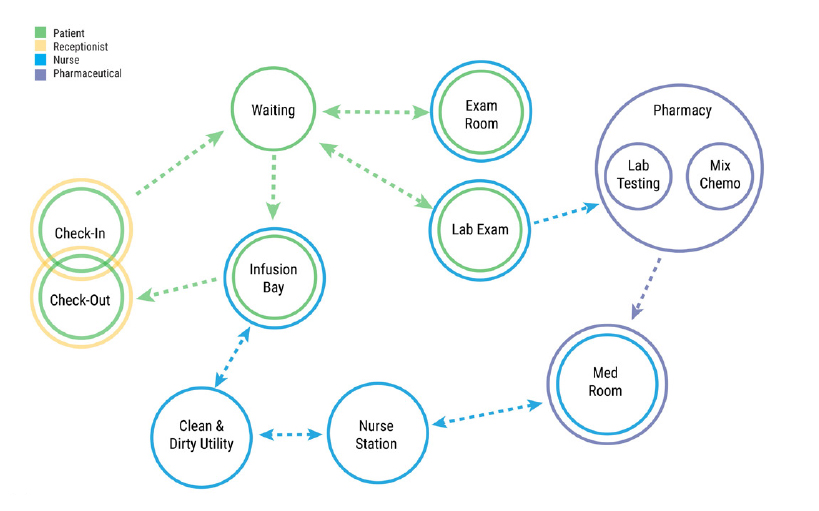
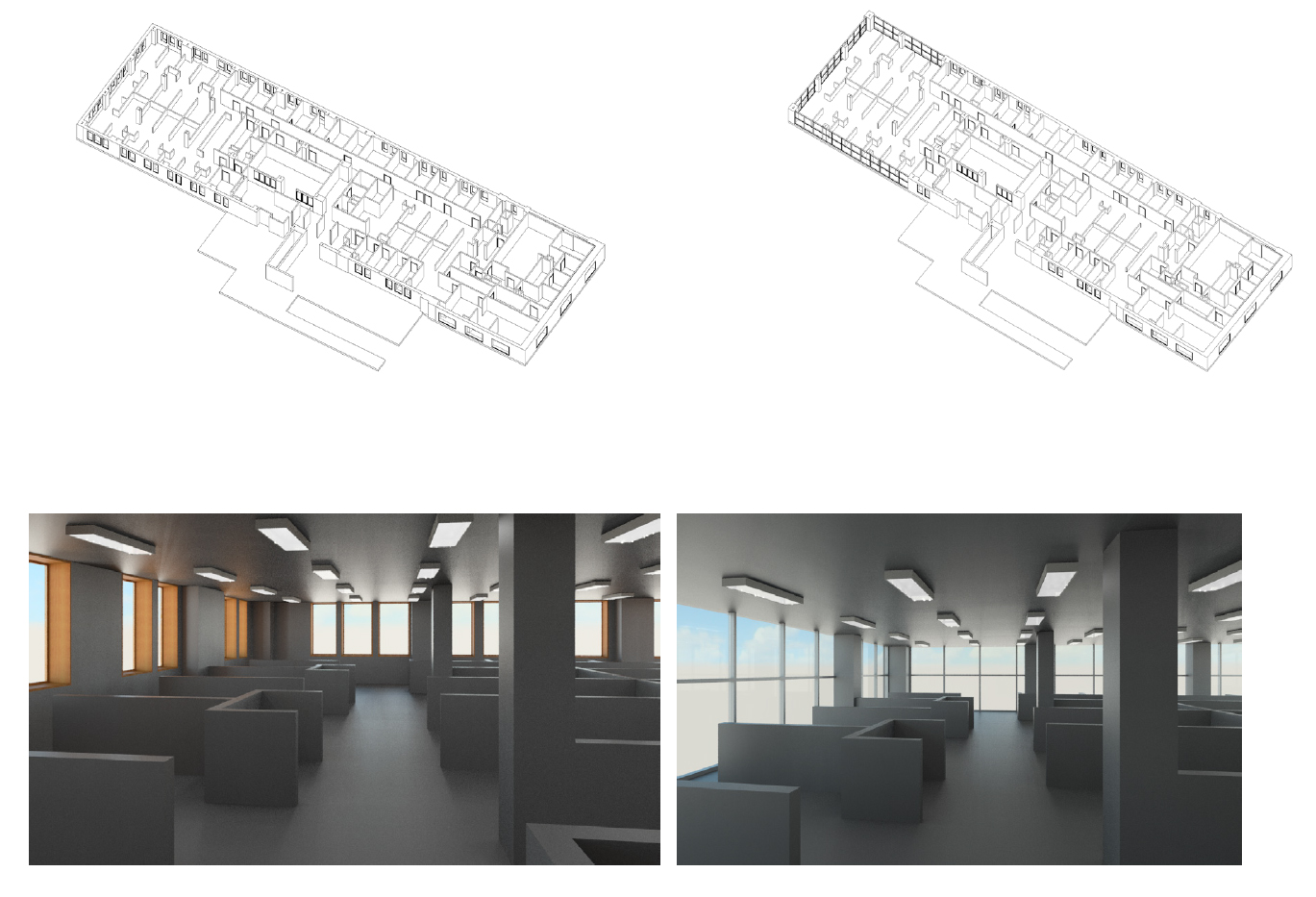
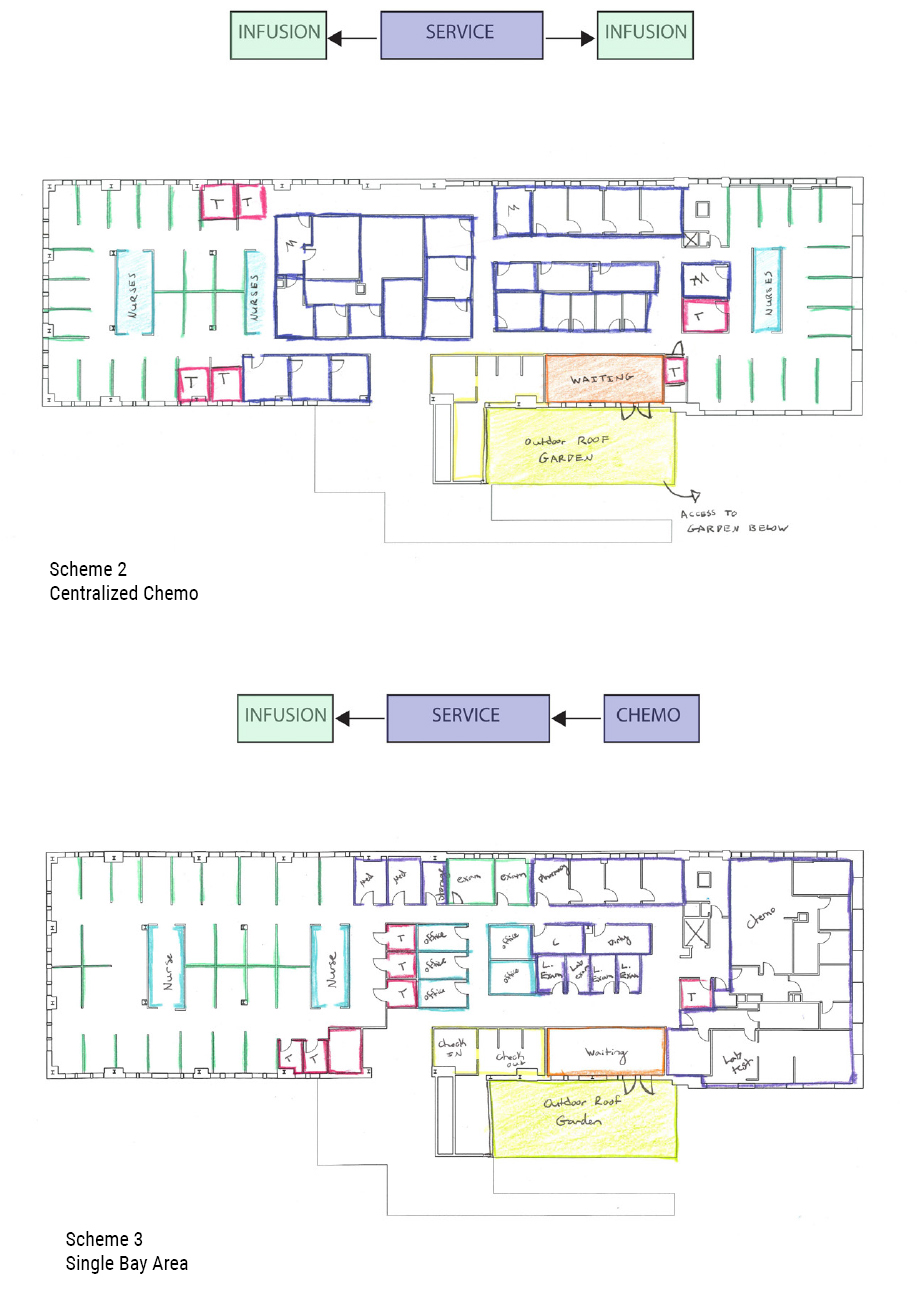

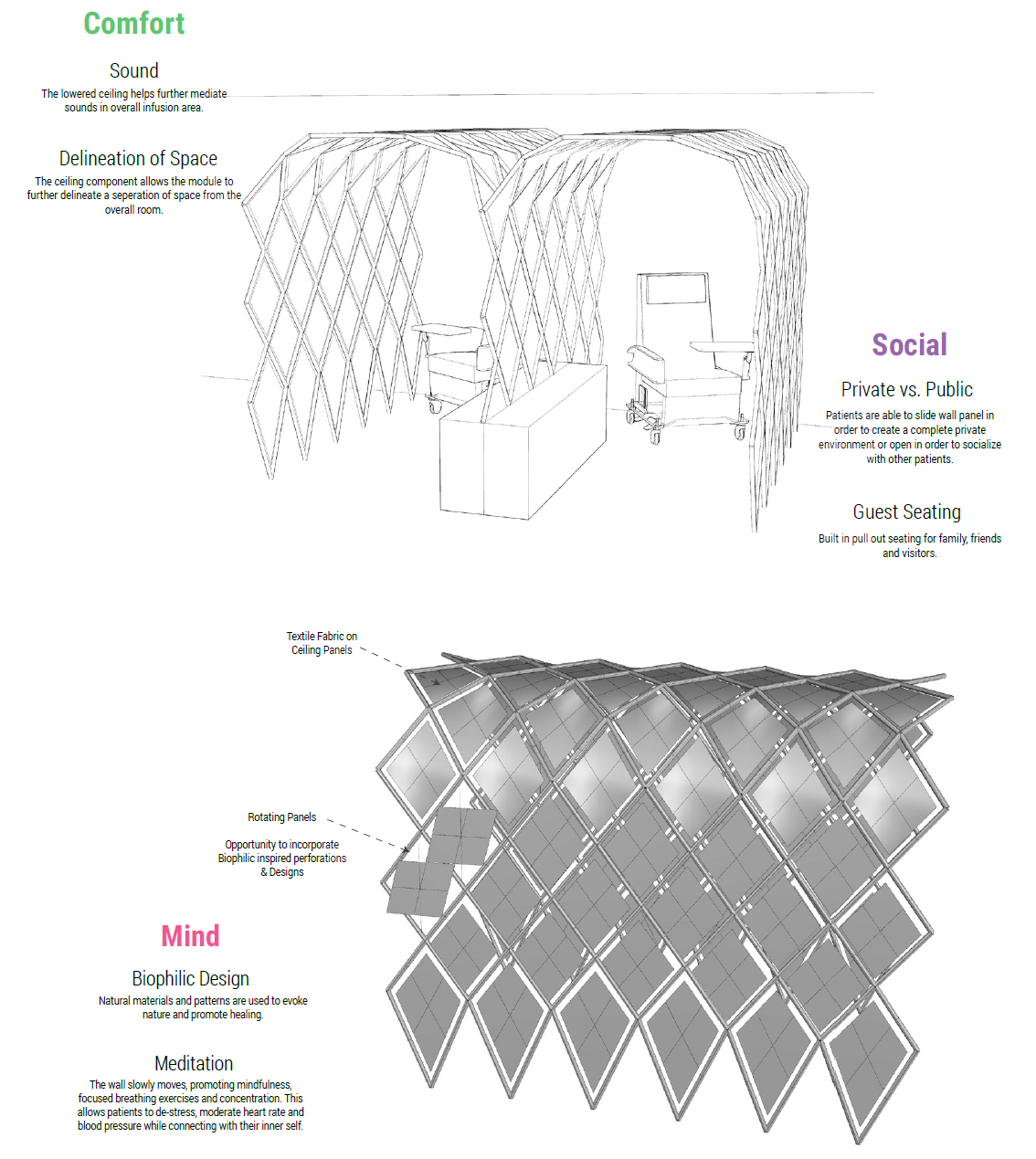
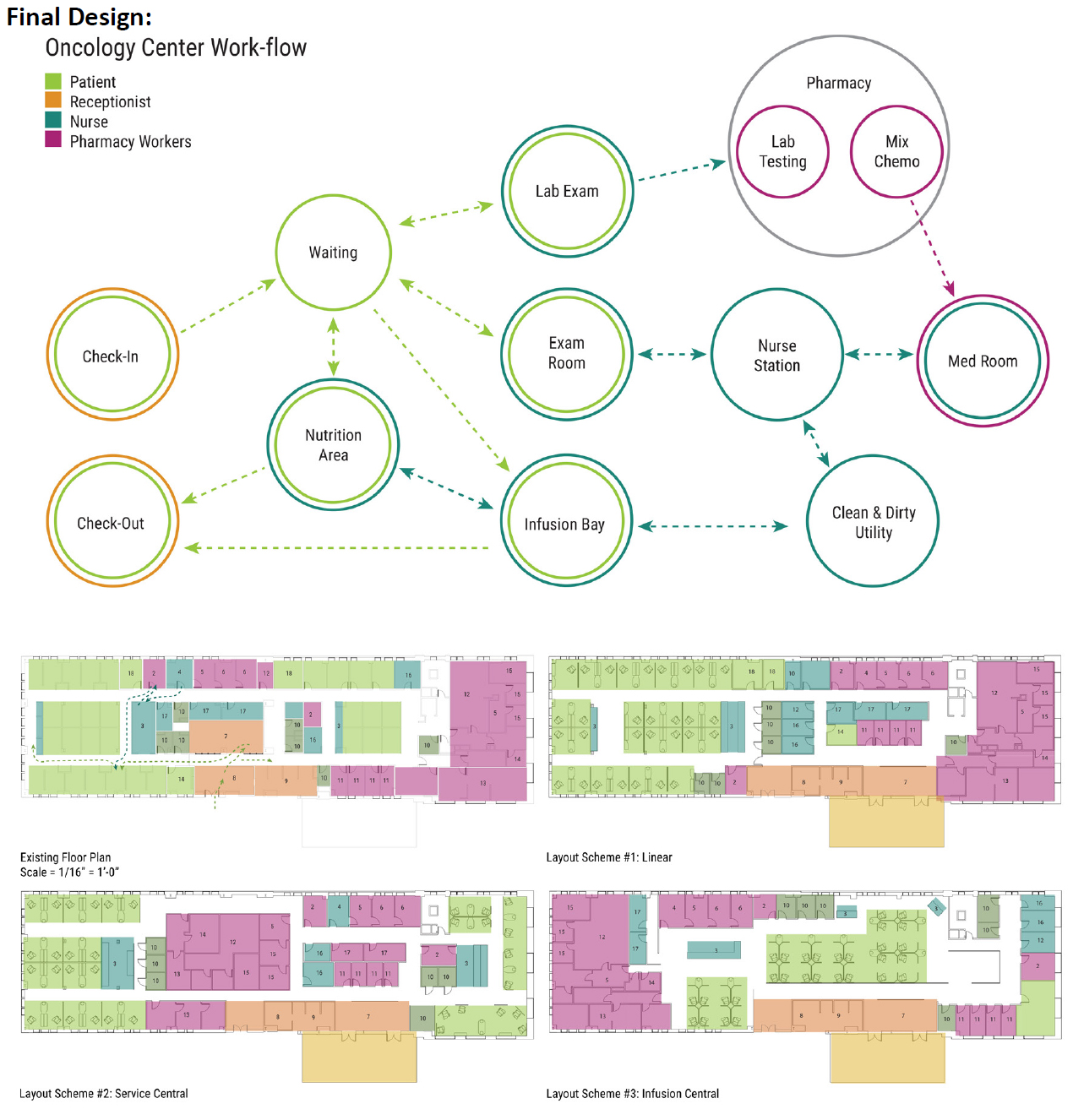
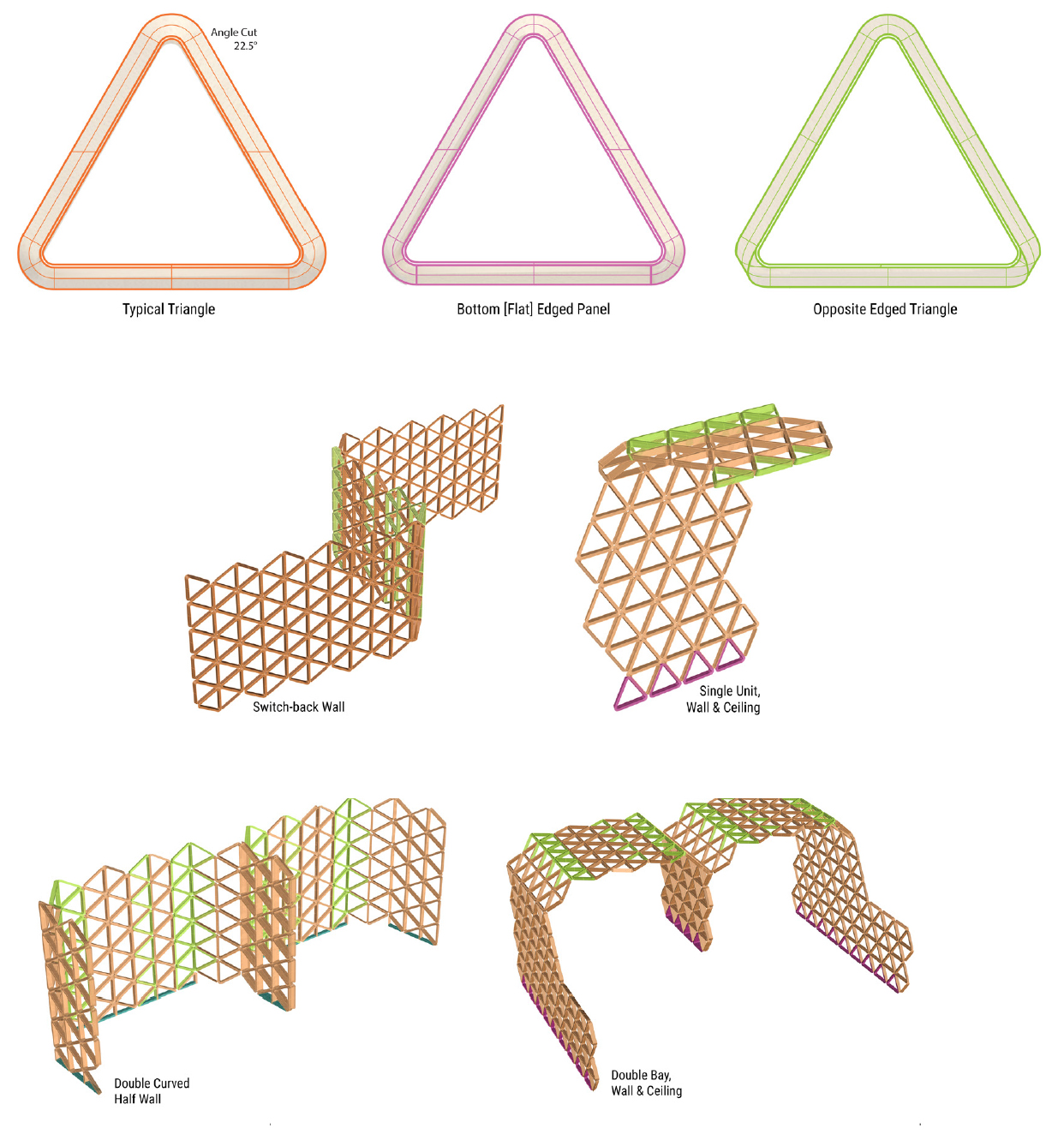
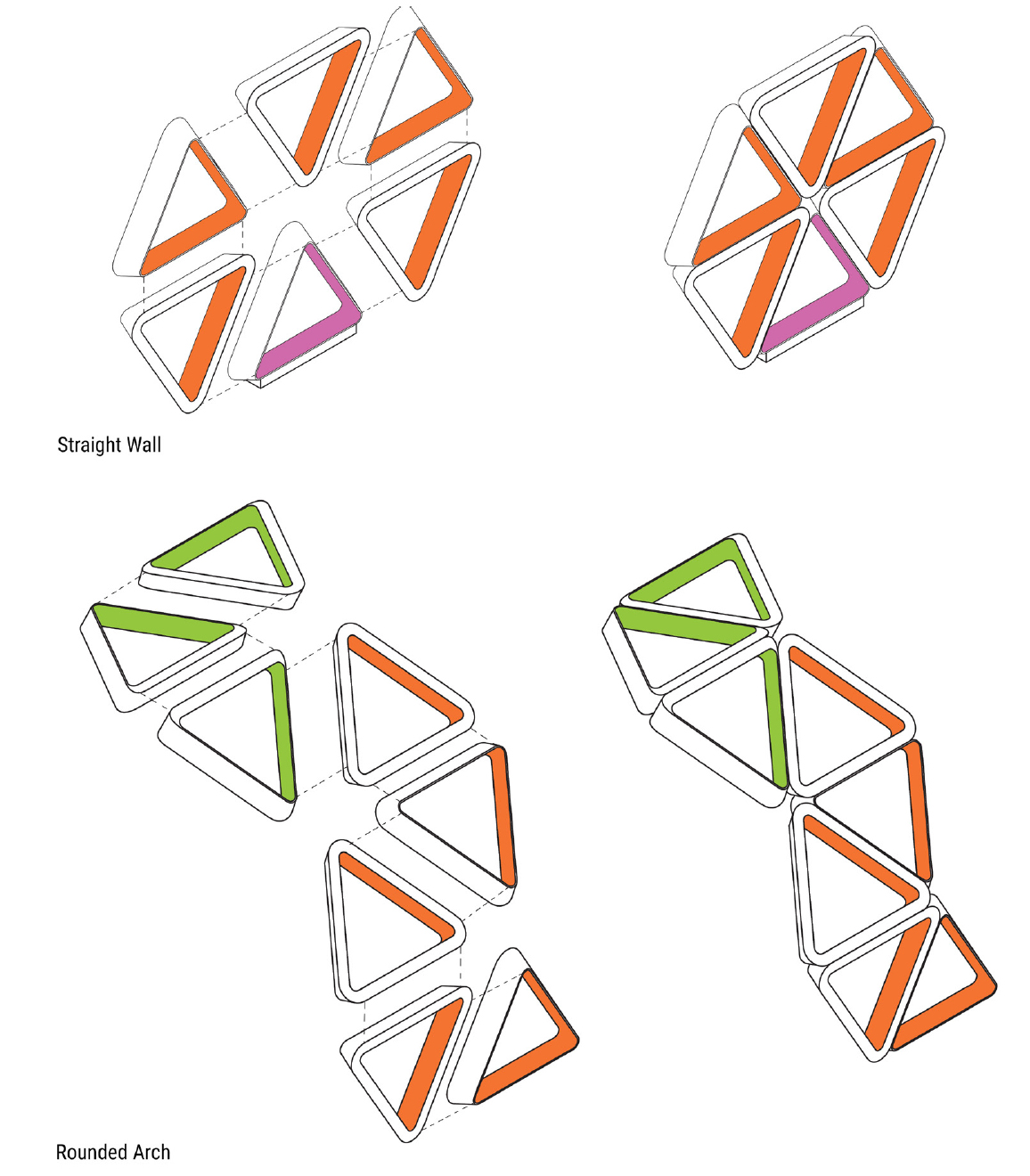
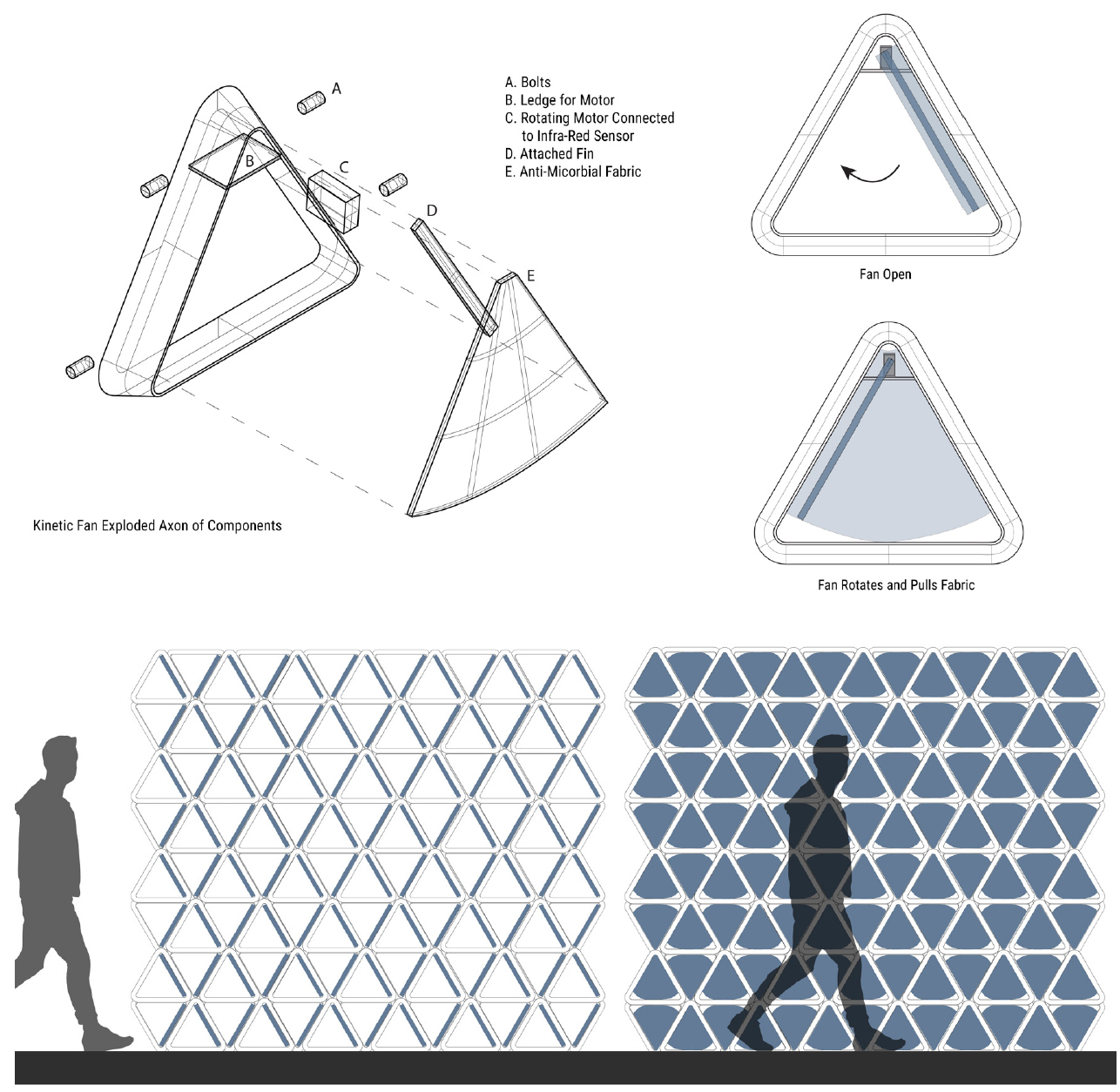
Prototyping:
The Project started out with a diagrid prototype with kinetic fans within it with one motor controlling two fans in the diamonds. There were many studies done on how to incorporate this fan and other privacy components. From the diagrid we broke the wall up into triangles instead to have more control over the modules. From here we extruded the triangles and broke them up into separate modules.
Once we came upon the extruded triangle design we cut out wooden prototypes that were hand sanded down to a few different angles. Once we came to the 22.5 degree angle we 3D printed the final small scale prototype. We realized during this process that we needed two different triangles in addition. One
with a flat bottom for the base of the wall and one with an opposite angle to complete the 90 degree turn.
We then moved onto large scale prototypes. Because we were using motors we designed a shelf for each motor to be mounted on. Using polyethylene foam we CNC routed out the triangles. We then had to coat them in a few layers of glue in order to be able to paint them and to give them a protective coating. We then painted them using spray paint. Then we were able to put the modules together and add the motors. Each motor had a fin attached to it in order to
pull the fabric open and closed. The final step was to wire the model.
